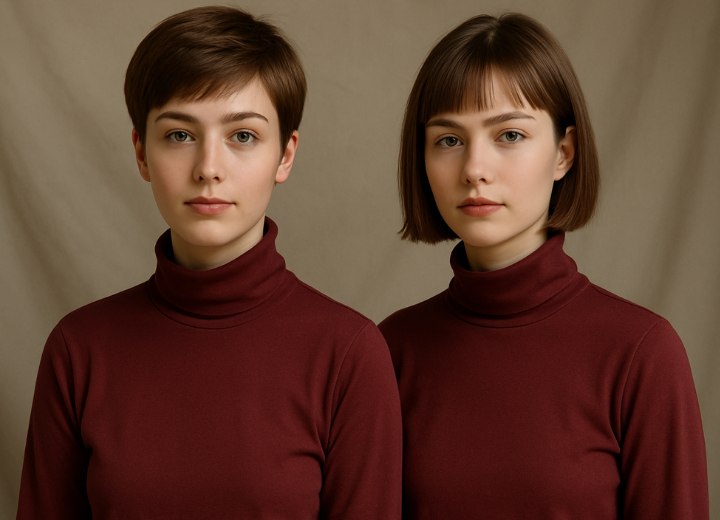Twins and Hair Colors

A: Yes, twins can have different hair colors, though the likelihood depends entirely on what type of twins we're talking about. To understand why, we need to dive into the world of twin biology and genetics.
When most people picture twins, they typically imagine identical twins: those mirror-image siblings who look remarkably alike. However, there are two distinct types of twins, each with very different genetic foundations that directly impact whether they'll share the same hair color.
Identical twins develop from a single fertilized egg that spontaneously splits into two separate embryos during the early stages of pregnancy. Because they originate from the same sperm and egg combination, identical twins share virtually identical DNA, essentially making them natural clones of each other.
Given this shared genetic blueprint, identical twins are born with the same natural hair color. Their genes contain the same instructions for producing melanin, the pigment responsible for hair color, so they'll typically have matching shades whether blonde, brunette, red, or black. However, this doesn't mean their hair will look exactly the same throughout their lives.
Environmental factors can create subtle differences in hair appearance between identical twins. Sun exposure is one of the most common culprits. If one twin spends significantly more time outdoors, UV rays can lighten the hair over time, creating a noticeable difference between the siblings. Other environmental influences include swimming in chlorinated pools, which can add greenish tints to certain hair colors.

Fraternal twins tell a completely different story. These twins result from two separate eggs being fertilized by two different sperm during the same reproductive cycle. Essentially, fraternal twins are siblings who happened to share the same womb. They're no more genetically similar than regular brothers and sisters born years apart.
Because fraternal twins have different genetic makeups, they can display dramatically different physical characteristics, including hair color. One fraternal twin might be born with jet-black hair while the sibling arrives with bright red curls. They could have completely different hair textures too. One with straight, fine hair and the other with thick, wavy locks.
The hair colors of fraternal twins follow the same genetic principles that apply to any siblings. If both parents carry genes for brown hair, both twins will likely have brown hair. However, if the genetic lottery plays out differently, one twin might inherit the mother's blonde genes while the other gets the father's dark hair genes. The possibilities are as varied as they would be for children born in separate pregnancies.
Exceptions
While it's extremely rare, there have been cases of identical twins with slightly different hair colors due to genetic mutations that occur after the initial egg split. These mutations happen in individual cells during development and can occasionally affect pigment production in one twin but not the other.
Another interesting phenomenon is mosaicism, where an individual has cells with different genetic makeups within their own body. In very rare instances, this can lead to subtle differences between identical twins, including minor variations in hair color or even patches of different colored hair within the same person.
©Hairfinder.com
See also:
Hereditary hair color
Psychology of hair colors
Fact or fiction: redhead extinction